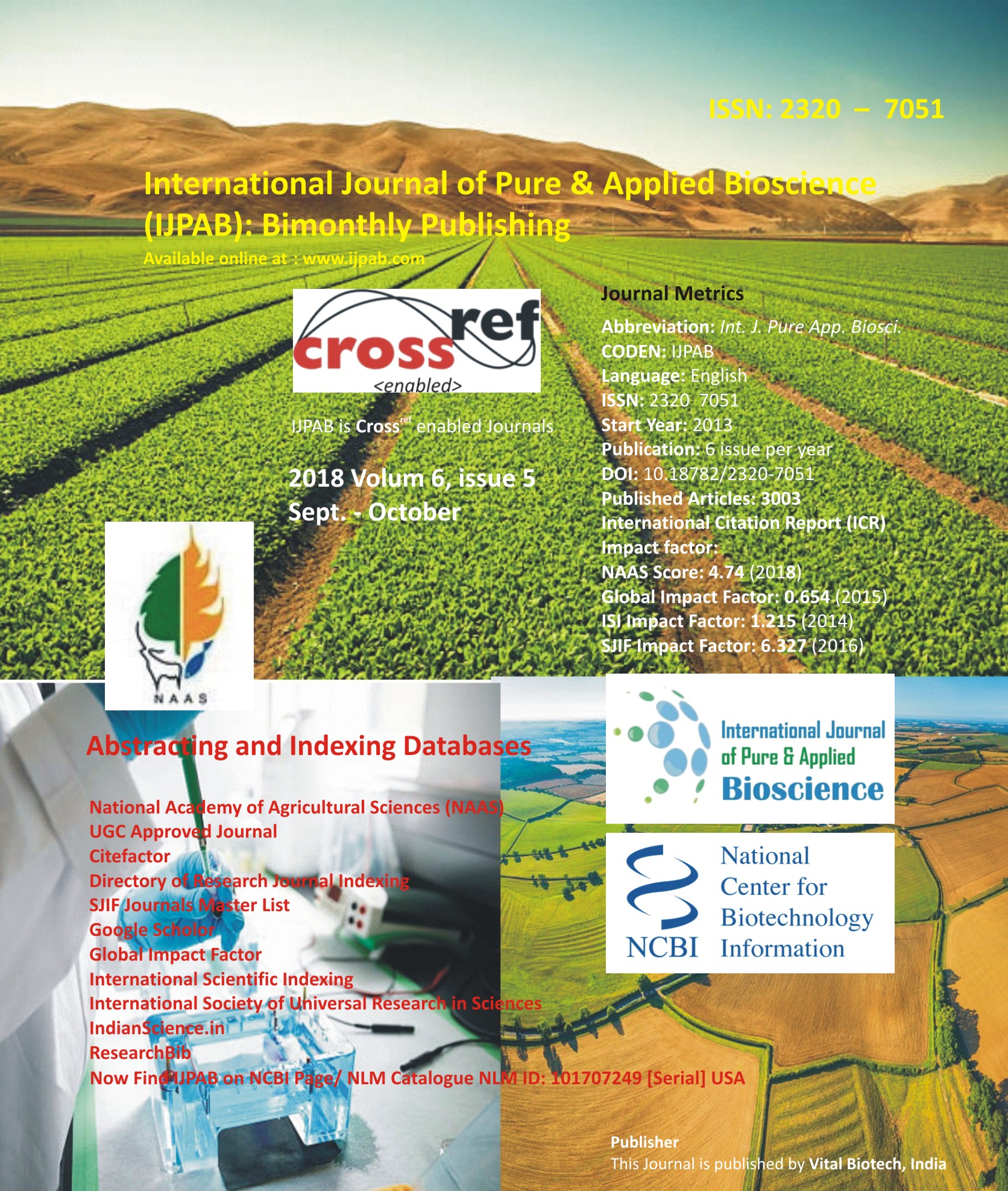
-
No. 772, Basant Vihar, Kota
Rajasthan-324009 India
-
Call Us On
+91 9784677044
-
Mail Us @
editor@ijpab.com
International Journal of Pure & Applied Bioscience (IJPAB)
Year : 2018, Volume : 6, Issue : 5
First page : (590) Last page : (596)
Article doi: : http://dx.doi.org/10.18782/2320-6906
Role Of Soil Microbes And Their Cell Components On Stabilization Of Soil Organic Carbon
Sunil B. H.1*, Pushpalatha M.2 and Mohankumar K. T.3
1&3Division of Soil Science and Agricultural Chemistry,
ICAR-Indian Agricultural Research Institute, New Delhi
2Department of Soil Science and Agricultural Chemistry, UASD, Dharwad
*Corresponding Author E-mail: sunilbh62@gmail.com
Received: 24.08.2018 | Revised: 21.09.2018 | Accepted: 29.09.2018
ABSTRACT
Soil organic carbon (SOC) is one of the largest pools of organic carbon (OC) and plays a primary role in global C balance and also soil functioning. SOC stabilization can be termed as any action which slows down the decomposition of SOM by reducing the mineralization rate. In a soil ecosystem, organic carbon can be stabilized via three mechanisms: (1) its biochemical recalcitrance, (2) formation of organo-mineral complexes through chemical interactions with minerals and metal ions (3) physical protection owing to occlusion within soil aggregates. Soil microorganism (fauna & flora) and their cell component like polysaccharides, glomalin etc. directly or indirectly involved in all the mechanism Microorganism and their cell components increase recalcitrance by changes in chemical characteristics of SOM, microbial synthesis and extracellular condensation. Increase interaction by microbial polysaccharides & proteins, sorption & precipitation, complexation reactions; decrease accessibility mainly by soil aggregation. Effectiveness of microbes in SOC stabilization by improving aggregate stability in the order of: fungi > actinomycetes> bacteria, although there is much variation within each group. The organic carbon is positively correlated with the different fraction of glomalin and the aggregate stability (%) increased with the glomalin. The aggregate percentage increased with inoculation of Bacillus sp. and Pseudomonas sp., Lactobacillus sakie (CY1) in sandy soil through extracellular polysaccharides (EPS) production. As the number and type of microbes and their cell components changed with soil management, understanding the in-depth mechanisms of microbes-driven SOC stabilization is crucial for long-term C sequestration.
Key words: Soil, Organic carbon, Microorganism.Full Text : PDF; Journal doi : http://dx.doi.org/10.18782
Cite this article: Sunil, B.H., Pushpalatha, M. and Mohankumar, K.T., Role of Soil Microbes and their Cell Components on Stabilization of Soil Organic Carbon, Int. J. Pure App. Biosci.6(5): 590-596 (2018). doi: http://dx.doi.org/10.18782/2320-7051.6906

